King city Cricket Ground

100 Lawford Road
Mon, Tue & Wed (10 AM-5 PM)

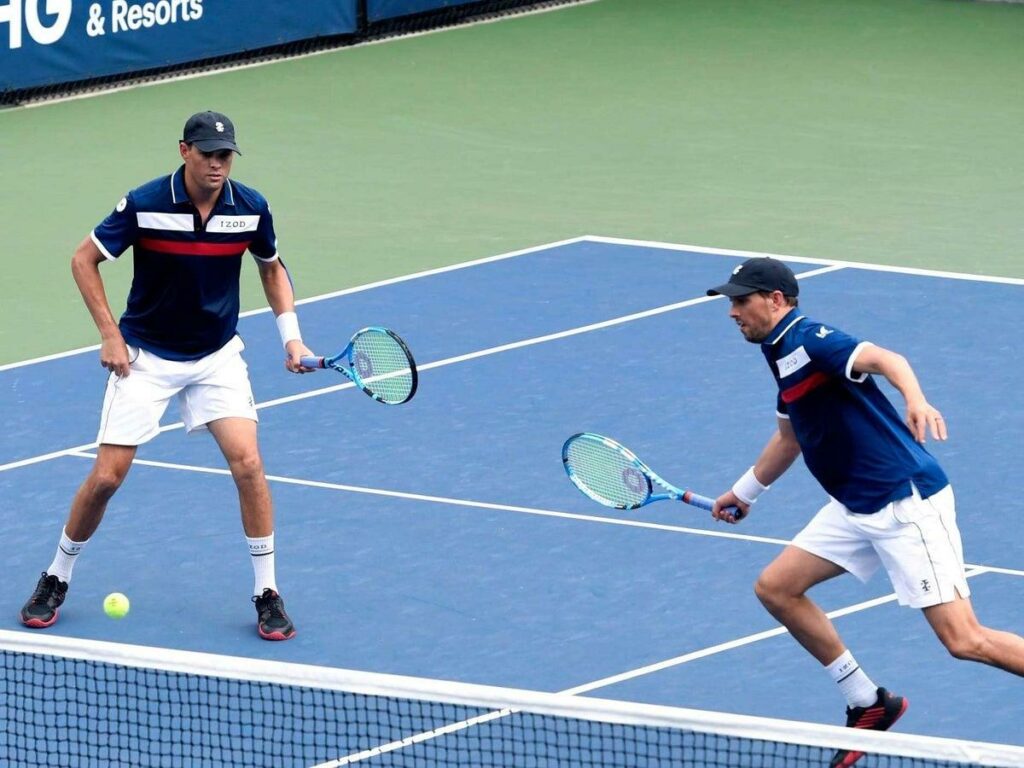
The scoring rules in doubles are similar to those of singles. When your team wins a point, you are awarded “15, 30, 40, and game.” The tournament will be focused on regular scoring meaning ad-in/ad-out scoring will be valid. Teams play up to 6 games. If the score reaches 5-all, teams will play 2 more games. If the score is 6-all, you will play a tiebreaker. If the score reaches 7-5, the set is complete.
You will play 2 out of 3 sets with a 10-point tiebreaker instead of a full third set.
Third Set will consist of a 10-point tie-breaker. A 10-point tiebreaker is played exactly the same way as a 7-point tiebreaker, but it is played to 10. One team serves the first point, then teams alternate every 2 points until the tiebreaker is completed. In tiebreakers, teams must win by 2 points (scores may end 11-9, 15-13, 20-18, if necessary).
This section will tell you everything you need to know about where to stand in doubles. There are two factors to this: where you should stand and where you are allowed to stand. Where to Stand When Serving In general, the serving team in doubles has an advantage. Therefore, the server’s partner will almost always stand at the net, ready to put away an easy volley earned from the serve. They will be standing on the opposite side of the court from their serving partner. You can see this below:
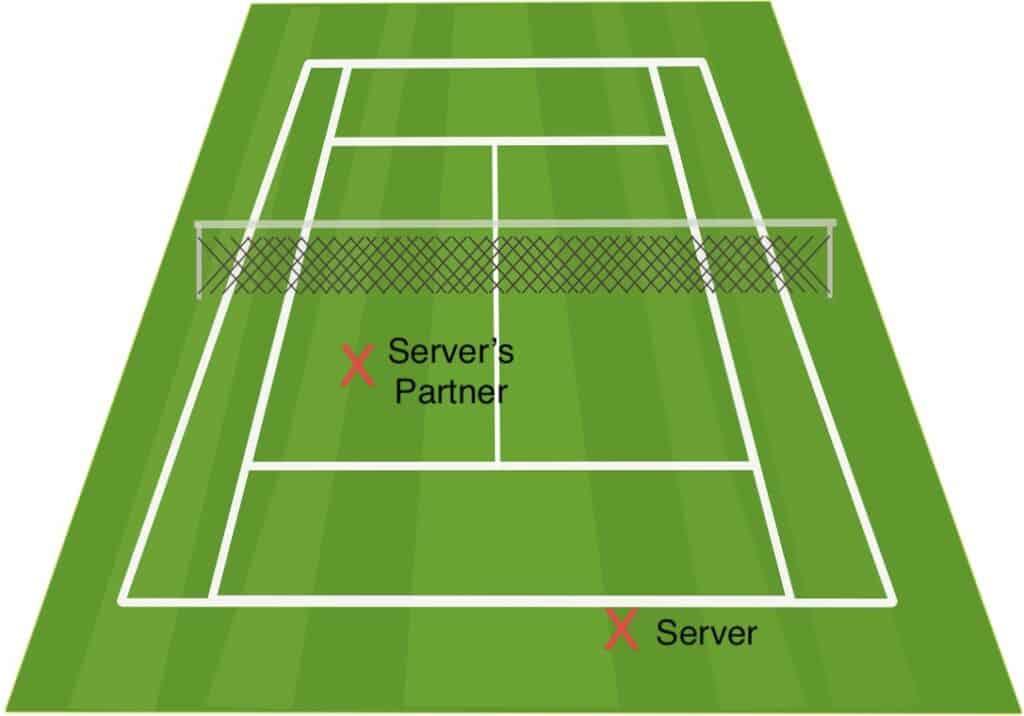
Typical Serving Formation Technically, the server’s partner can really stand anywhere. Although it is uncommon, the rules allow for them to stand on the baseline with their partner if they want.
The servers partner can also, by the rules, stand on the same side as their partner. This is called “Aussie Formation.” This strategy is shown below and is used as a way to lure the returning opponent to hit the ball down the line.
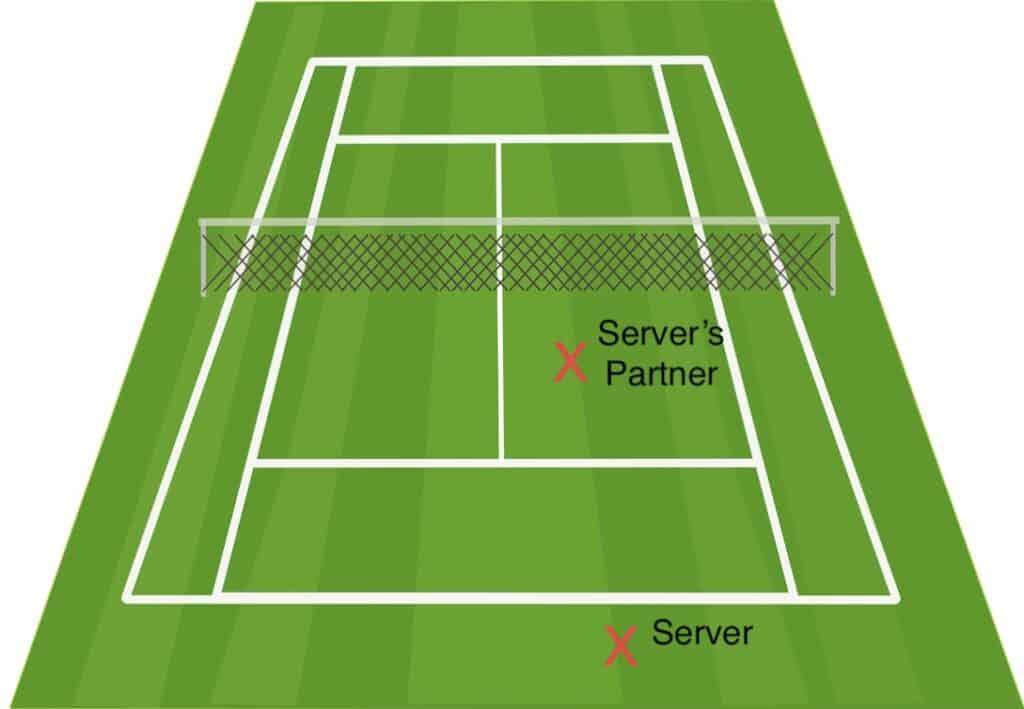
“Aussie Formation” Where to Stand When Returning When returning, there is really no “right” or wrong place to stand as far as where you should stand strategically. Some teams prefer the returner’s partner to stand at net, while other teams play with both players on the baseline. Both of these options are highlighted below:

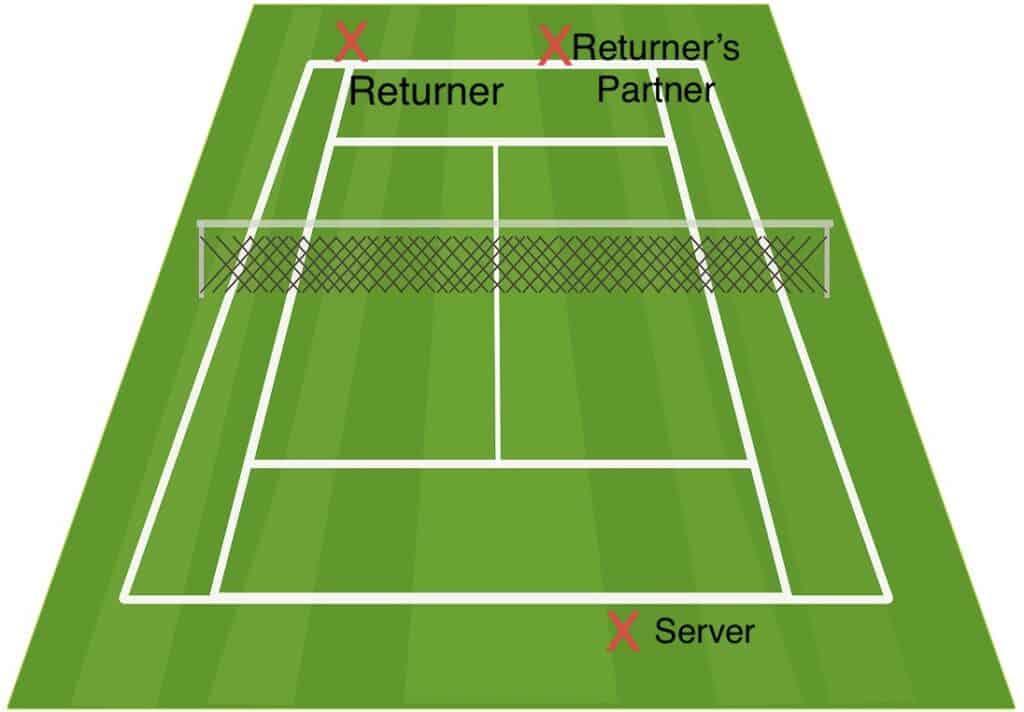
Two Traditional Ways to Return Serve in Doubles There are, however, a couple of rules on where you are allowed to stand when returning serve in doubles. When returning, you must stand in the court that you are receiving serve from. Your partner must stand in the opposite court. In other words, the receiver‘s partner cannot stand on the side with their partner. This is seen as an obstruction and is against the rules. This rule is shown in the image below.
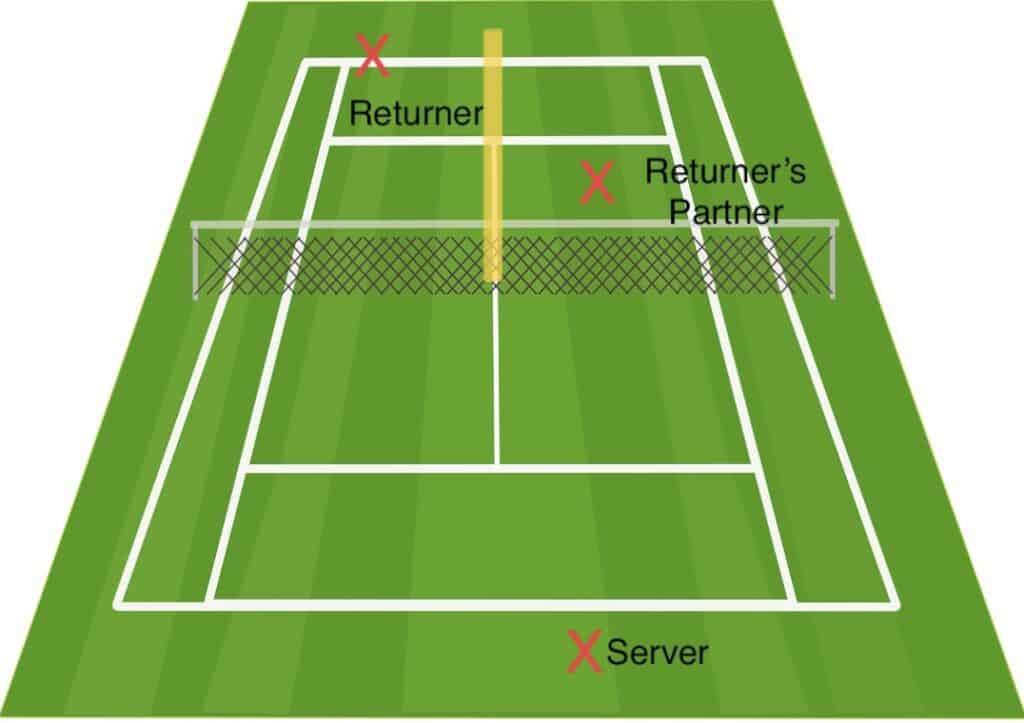
The highlight shows the boundary of the returning team’s sides of the court. After the return is hit, teams can do whatever they want. They can switch sides as they please, as long as it is during a point. This typically only happens when it is necessary by defense.
This question comes up a lot. Let’s say your partner is having a hard time returning on the deuce side on a particular day. Are you allowed to switch with him? Yes, you can, but it has to be in between sets. The rules state that you must stay on the same side that you start on from the first point for the entirety of a set. This rule is put into effect because it prevents partners from switching sides every point. Think of it this way. If my partner was Roger Federer, I would want him returning on every point. This rule assures both players each return on roughly half of the points in a set. As I mentioned above, you can switch sides during a point. Once the return is struck, players are allowed to move freely however they please.
If you have any question or just need more information about the event, call us at (416)768-5262 or send us a mail with the following form.

majlis khuddamul ahmadiyya canada